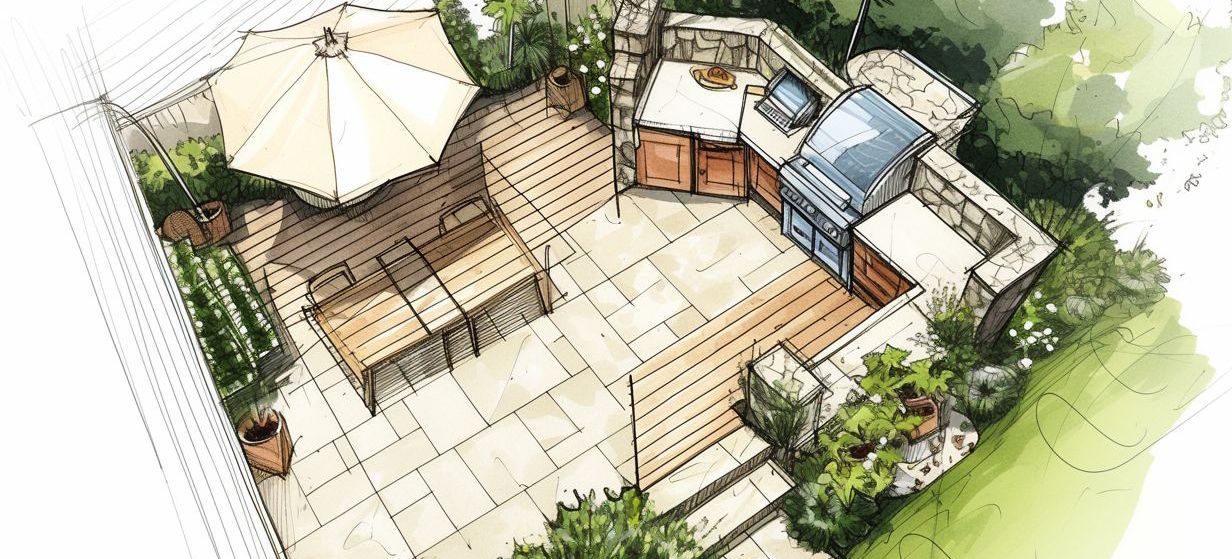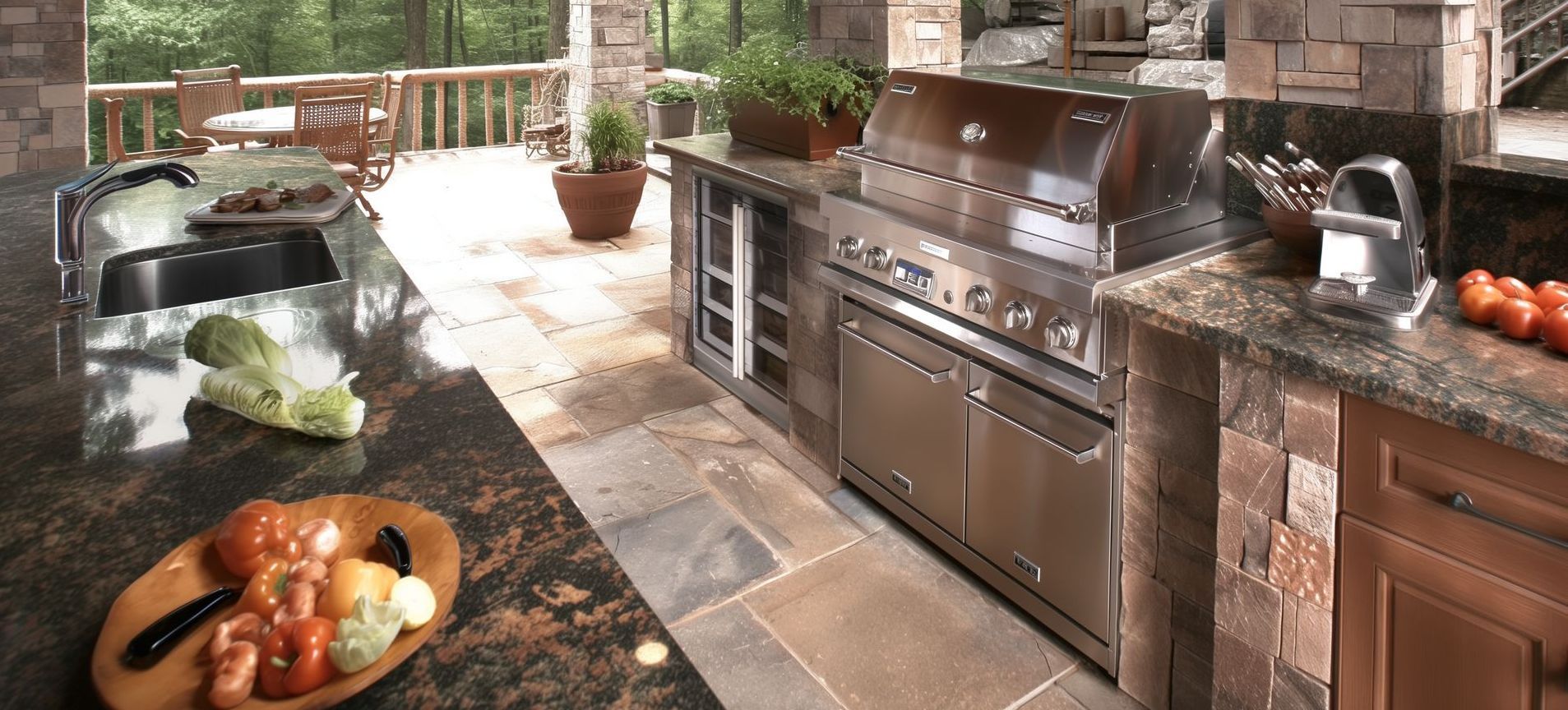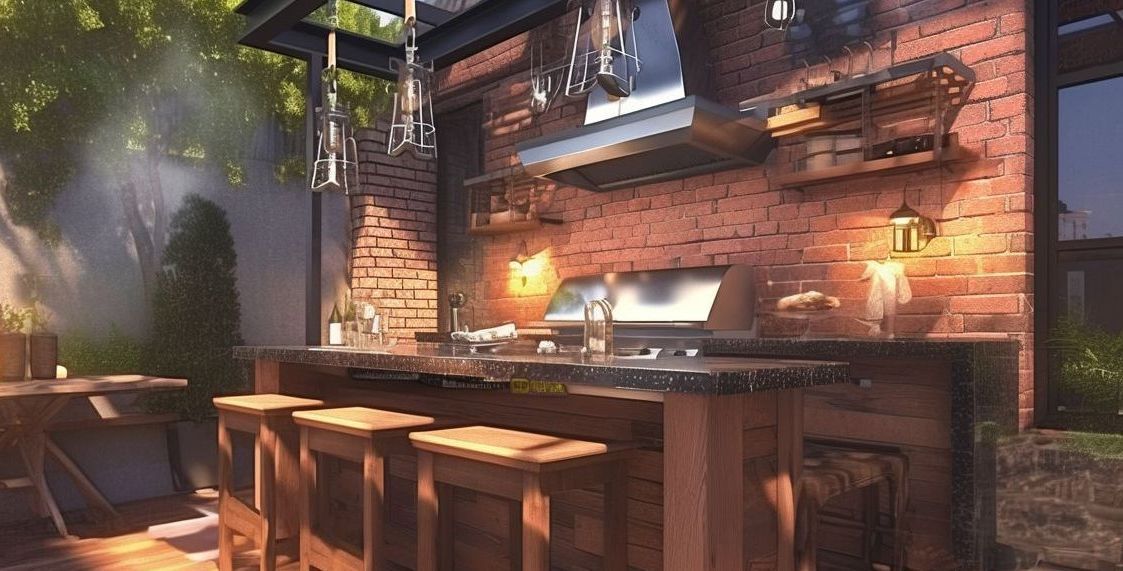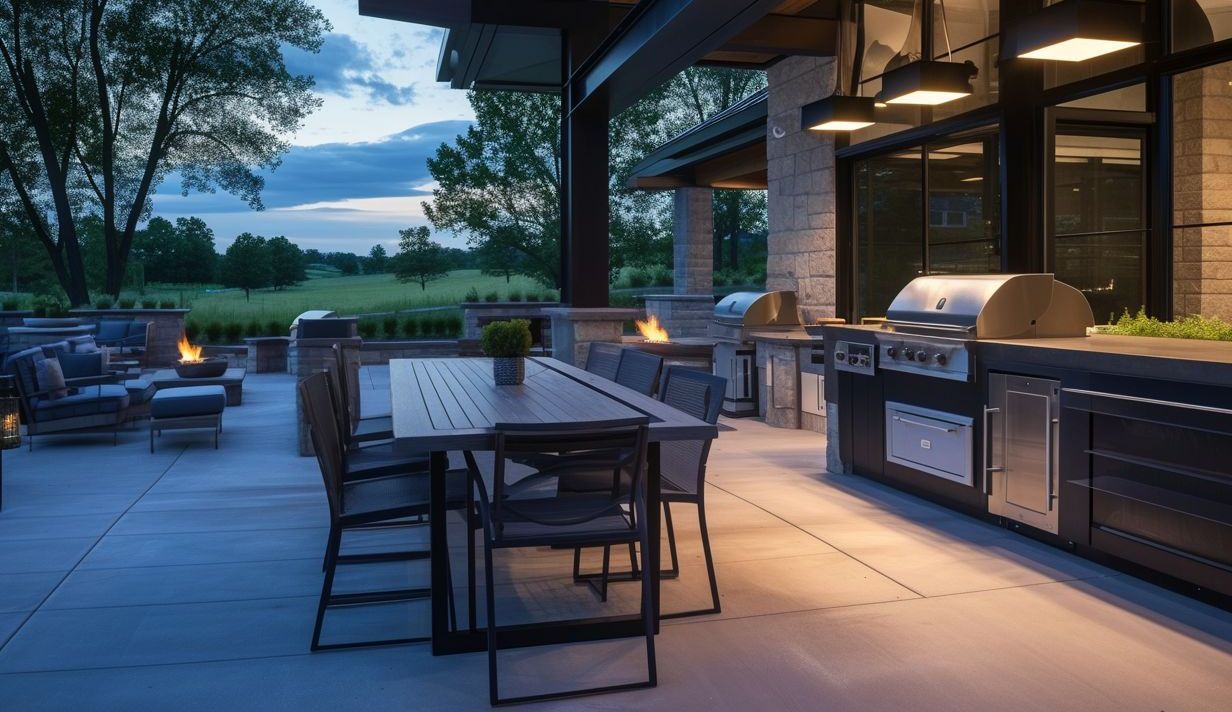Bringing the Indoors Out: Creating a Functional and Stylish Outdoor Kitchen Design
Outdoor living has surged in popularity in recent years. The 21st-century modern homeowners seek to extend their living spaces beyond the confines of their homes.
The outdoor kitchen design stands out among the various outdoor living trends as a symbol of luxury and practicality. It seamlessly blends functionality with style. By bringing the indoors out, you can create a versatile space where cooking meets entertainment.
In this article, we'll share expert tips for designing an outdoor kitchen that is functional and looks great with your
patio setup. Whether you're picking outdoor appliances or planning cozy dining spots, these tips below will suit outdoor kitchens of all types and budgets.
Layout and Planning Your Outdoor Kitchen

Space Allocation
Allocate space for essential elements such as cooking and prep areas, seating, storage, etc., or any additional features. Consider the traffic flow and ensure you have enough room for movement and interaction while cooking.Appliances and Features
Select outdoor-rated appliances and features that meet your cooking needs. Popular choices include grills, smokers, refrigerators, sinks, and outdoor cabinets. To enhance comfort and ambiance, you may consider incorporating features such as built-in lighting, sound systems, and heating elements.Flow and Functionality
Design your outdoor kitchen with a focus on efficiency and functionality. Create distinct zones for food preparation, cooking, serving, and cleanup to streamline workflow. Ensure these areas are conveniently located and interconnected to facilitate smooth task transitions.Building Codes and Permits
Before you start constructing an outdoor kitchen, familiarize yourself with local building codes and regulations. You must obtain necessary permits and ensure compliance with zoning laws , setback requirements, and safety standards. Consult with professionals such as contractors and designers to ensure your outdoor kitchen meets all legal requirements.Select all Your Appliances
Grill
A high-quality grill is the centerpiece of any outdoor kitchen. Depending on your cooking preferences, choose between gas, charcoal, or electric models. Consider features such as multiple burners, infrared technology, and rotisserie capabilities for versatile cooking options.Outdoor Sink
A sink is critical for food prep, cooking, and cleanup in your outdoor kitchen. Opt for a stainless steel or weatherproof sink with a durable faucet and ample basin size.Outdoor Cooktop or Side Burner
Consider adding an outdoor cooktop or side burner. This allows you to prepare side dishes, sauces, and other items while grilling.Selecting Durable Materials to Build the Kitchen

Weather-Resistant Structures
Opt for materials that can withstand exposure to outdoor elements such as sunlight, rain, wind, and temperature fluctuations. Materials like stainless steel, stone, concrete, and brick are excellent choices for outdoor kitchen designs.Stone Countertops
Choose stone countertops, such as granite or quartz. These are durable and resistant to heat, moisture, and staining which make them ideal for outdoor kitchens. These natural stone materials add a luxurious and elegant touch to your outdoor space while providing a durable surface for food preparation.Non-Slip Flooring
Select flooring materials that provide traction and safety, especially in wet conditions. Options like textured concrete, porcelain tile, or natural stone pavers are excellent choices for outdoor kitchen flooring.Weatherproof Cabinetry
Invest in outdoor cabinetry made from weatherproof materials such as marine-grade polymer, teak, or stainless steel. These materials can withstand exposure to moisture, humidity, and UV rays.Use Every Centimeter of Your Outdoor Space
Maximizing Functionality
Outdoor spaces are often limited compared to indoor areas. So, making the most of every centimeter ensures you have all the necessary features and amenities within reach. You can incorporate essential elements and optimize the functionality by carefully planning the available space.Creating a Welcoming Environment
Effective space utilization allows you to design a welcoming outdoor kitchen. It feels open, inviting, and comfortable for cooking and entertaining. By avoiding overcrowding and ensuring adequate circulation space, you can create a relaxed and enjoyable atmosphere where guests can mingle easily.Focus on Aesthetics

When setting up an outdoor kitchen consider your aesthetic taste to create a stylish kitchen that you will enjoy. Here are some ideas to hide it:
Lakeside Landscape
Imagine a stunning outdoor kitchen nestled along the serene shores of a lake . Incorporate natural elements like stone countertops and wooden cabinets to blend seamlessly with the surrounding landscape. Install large windows or sliding glass doors to offer uninterrupted water views while cooking and dining.
Rustic Elegance
Embrace the rustic charm of the countryside with an outdoor kitchen that exudes timeless elegance. Opt for a combination of rugged materials such as reclaimed wood, wrought iron, and weathered stone to evoke a sense of rustic sophistication. Incorporate a large pergola or canopy to provide shade while cooking.
Coastal Chic
Capture the essence of coastal living with a chic outdoor kitchen inspired by the laid-back vibe of beachfront resorts. Choose a palette of soft blues, sandy neutrals, and crisp whites to evoke the colors of the sea and sky. Opt for sleek, modern appliances and fixtures with clean lines.
To enhance the coastal theme, incorporate marine-inspired accents such as rope detailing, driftwood accents, and seashell motifs.
Incorporating Lighting

Task Lighting
You can Install task lighting above key areas where food preparation and cooking will take place. Place it near the grill, countertops, and sink. This ensures that you have adequate illumination for cooking and working safely in the kitchen.Ambient Lighting
You can incorporate ambient lighting to create a warm and inviting atmosphere in your outdoor kitchen. You can achieve this through overhead fixtures, pendant lights , or string lights suspended above the dining and seating areas. Ambient lighting helps to set the mood and enhances the overall aesthetic appeal of the space.Adjustable Fixtures
You may opt for lighting fixtures with adjustable settings or dimmers to control the intensity of the light. This allows you to adjust the lighting levels according to different activities, such as cooking, dining, or entertaining.Final Thoughts
Creating a functional and stylish outdoor kitchen is an exciting idea that enhances your outdoor living space. It allows you to enjoy cooking in the heart of nature. You can design a kitchen that meets your needs and complements your lifestyle only if you follow the tips precisely.
But if you are unsure how to incorporate functionality and aesthetics in your outdoor kitchen design, contact a professional like KG Landscape .
We can help you with proper planning and creative touch to create your dream outdoor kitchen. It can become a focal point of your home, and you will enjoy the space for years to come. Don't hesitate to call us! Let us help bring your outdoor kitchen vision to life.










